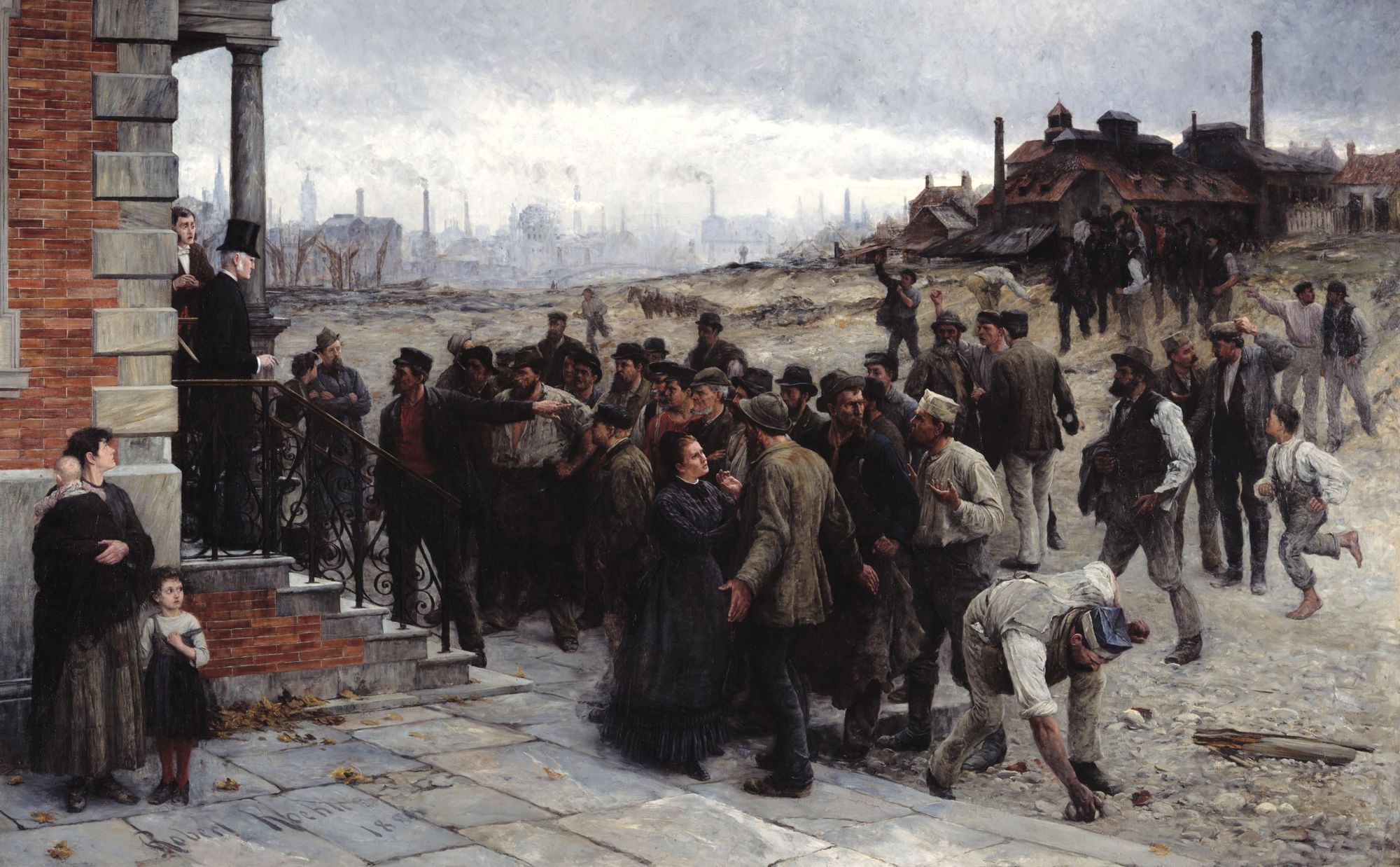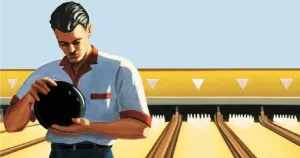This week, thousands of striking workers offer an inspiring glimpse of a more civic country.
The mobilization of these workers reminds us of the power of face-to-face civic engagement in the digital age. Despite the far-reaching impacts of technology, including the relocation of much of the initial hell-raising and organizing of social movements to the internet, in-person protest and action remains a key driver of change.
At a time when our instinct tells us to “send tweet,” the latest labor activity exemplifies the historical record: that face-to-face organizing is the best route to progress. Beyond their value for social or economic change, labor unions and other forms of civil society are a critical component of public reverence for democracy.
Even before the proliferation of the internet as we know it today, the habits of American civil society were changing dramatically. Twenty-five years ago, the political scientist Robert Putnam considered this shift in his studies of civic life in the United States, most notably in his work Bowling Alone.
Putnam specifically examined the decline of membership in voluntary associations—organizations formed by individuals from some social purpose—in the last decades of the twentieth century. These associations include local and national clubs and organizations—labor unions, for example—as well as global groups and those formed online. They are a natural part of public life, providing meaning and purpose to those who participate.
Putnam recognized the importance of voluntary associations and was concerned by the decline he identified. He argued this trend contributed to a deterioration of social capital, which is the trust produced by interpersonal connections that make societal cooperation and coordination possible.
According to the argument, liberal democracy relies on trust between the people and the government. Waning social capital thus bodes ill for quite literally any aspect of American life—including democracy.
Now, one generation removed, what do we make of Putnam’s findings? The political scientist’s lamentation of civic decline struck many readers as nostalgic and luddite. However, his argument about the value of voluntary associations to liberal democracy should not be discounted.
In fact, it is crucial to consider civic decline as we try to understand the recent rise of anti-democratic forces in the United States. This week offers an excellent occasion to consider the voluntary association, one especially important component of civil society.
For centuries in the United States, voluntary associations have served as a vital civic resource for individuals who sought to effect political change. The design of a political system will determine the ways in which a people will engage in public affairs, and the liberal democracy established by the U.S. Constitution encourages citizens’ engagement as collectives. The larger the size of an association and the more comprehensive its scope yields more influence and power. (That design may itself have been a legacy of the first colonists’ understanding of the power of the collective.)
For most of American history, the dominant form of voluntary association had a few key characteristics. They brought together individuals around a specific cause or interest and could be found in all sizes. Groups were often federated: locally-rooted but connected to state, regional, or national headquarters. Some examples of federation included the Philadelphia chapter of the Women’s Christian Temperance Union or a Masonic lodge in Boston. Political causes deliberately maintained federal-level organizations in this way to maximize their power. As some scholars have observed, the “political system rewarded movements and associations able to coordinate efforts at the national, state, and local level.” Less common were entirely local associations, despite Robert Putnam’s focus on neighborhood groups.
The apex of voluntary associations predated computers and the rise of the professionalized civil society organization. Interactions and activities in these associations occurred primarily face-to-face, rather than mediated through screens. Volunteers comprised the membership and leadership, attending meetings, planning events, demonstrating together, and sustaining their chosen organization for no salary.
Membership consisted of people from different socioeconomic classes, but many causes excluded women and non-whites. However, excluded groups often went on to form their own organizations, cultivating counter-public spheres separate from the white, male mainstream. What’s more, these counter-publics provided space for excluded groups to strategize and advocate for full participation in public life, as with the role of women’s clubs in the fight for women’s suffrage and the Black church during the Civil Rights Movement.
Scholars and observers treat the voluntary association and habit of organizing around causes as hallmarks of American civil society. Alexis de Tocqueville famously observed in the 19th century that “Americans of all ages, all conditions, all minds constantly unite."
The French political thinker understood that this activity was partly encouraged by the nature of democracy. Where no one possesses kingly power at birth, individuals must rely on each other and assert their power as collectives to make political change. And so the United States grew to become “a nation of joiners”, with citizens continually uniting to shift politics in their favor.
Many phenomena converged to force the decline of traditional voluntary associations. The cultural shifts caused by the Civil Rights Movement and the women’s movement instigated a decline in racially- and gender-segregated organizations. What’s more, younger generations with different attitudes than their parents and grandparents simply joined associations at a lower rate. Even further, highly educated people committed less time and resources to these organizations, in part as they became more consumed with work. And as Putnam famously argued, Americans also became consumed by television, which took time away from civic activities.
What did we lose when we disengaged with public life? Membership in voluntary associations generates social capital, teaches civic skills, and connects the public with their government. An individual’s social network expands, they become a more capable citizen, and they feel like a contributing member of their democracy. But scholars at the turn of the century overlooked one important product of membership: the civic identity that is developed in the process of forming, joining, and participating in voluntary associations, which ties individuals to the democratic project in importantly different ways.
Contemporary public discourse heavily focuses on identity. But rarely do we attach the “civic” adjective to the noun “identity.” Considered as an idea, “civic identity” helps to describe our sense of obligation to our community. An individual’s community might comprise residents of the same neighborhood, people of the same race or gender, members of an association, etc. Everyone thus possesses a civic identity, but its strength and character depend on an individual’s experience.
When an individual chooses to form an association with others or to join an existing association, they tie themselves to a collective project and begin to feel responsible for its outcome. Feeling connected to the outcome of the collective shapes our own conception of who we are. Civic identity is how we define ourselves in relation to our communities.
Through participation in voluntary associations, individuals cultivate civic identities relating not only to their particular communities but by extension the civil society of democracy. The extent of an individual’s commitment to civil society—the strength, character, and expression of their civic identity—thus matters to the study of democracy. If we seek to understand the value of the voluntary association to the democratic citizen, we must consider its role in cultivating civic identities.
Civic identities, at their strongest, provide for citizens’ capacity to define themselves freely on their own terms, even as they connect us to a larger whole. As voluntary associations deteriorate and civic identities do so with them, the health of the democratic project is put in jeopardy. If we are to make it through these troubled times, then, we ought to pay heed to the noise coming from the picket lines.
Dan Napsha was a student of political science at Kenyon College. This article draws from his honors thesis on civic identities. You can find Dan on Twitter @dnapsha.
Subscribe to SpectaclesFurther Reading
- Bowling Alone, by Robert D. Putnam.
- "Biography of a Nation of Joiners," by Arthur Schlesinger, in The American Historical Review.
- "A Nation of Organizers: The Institutional Origins of Civic Voluntarism in the United States," by Theda Skocpol, Marshall Ganz, and Ziad Munson in The American Political Science Review
- "United States: From Membership to Advocacy," by Theda Skocpol in Democracy in Flux.
- Democracy in America, by Alexis de Tocqueville.




Comments
Join the conversation